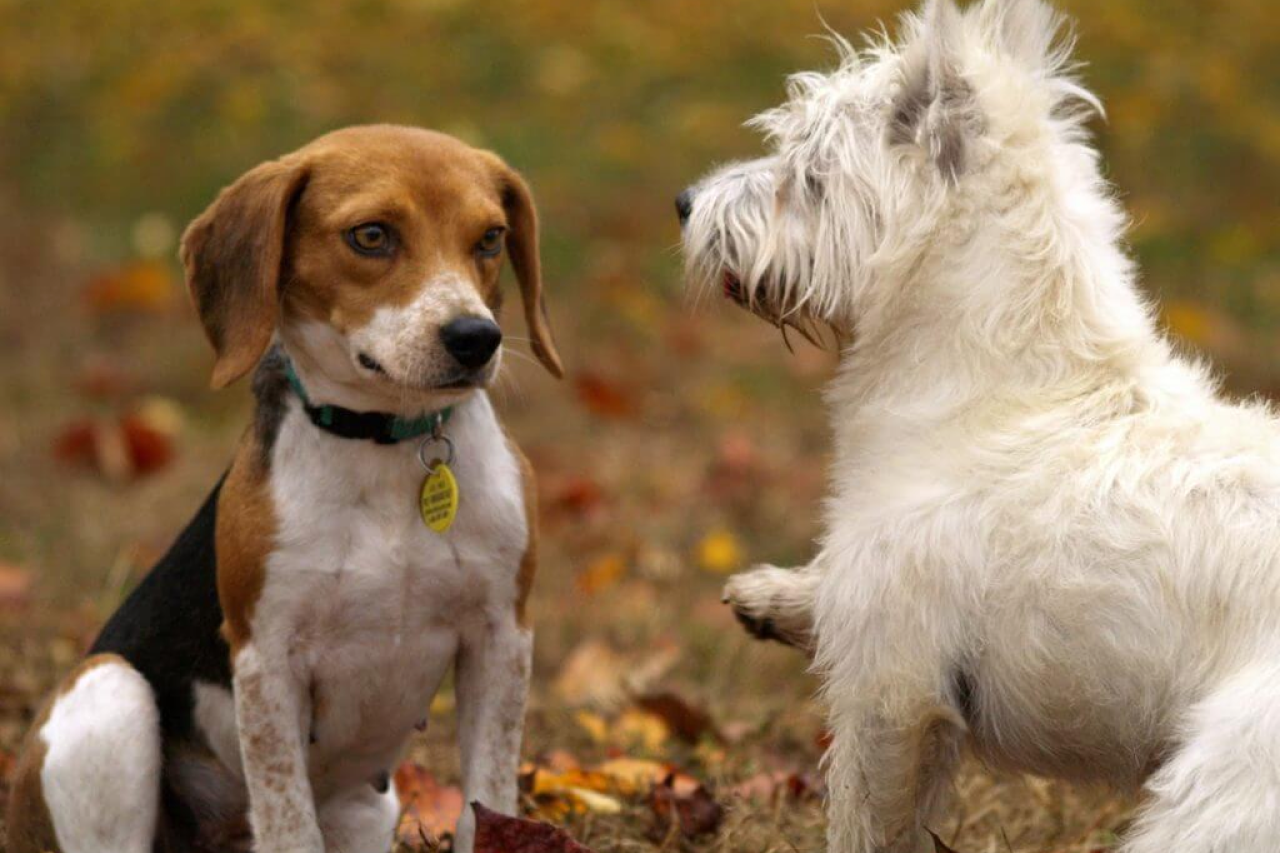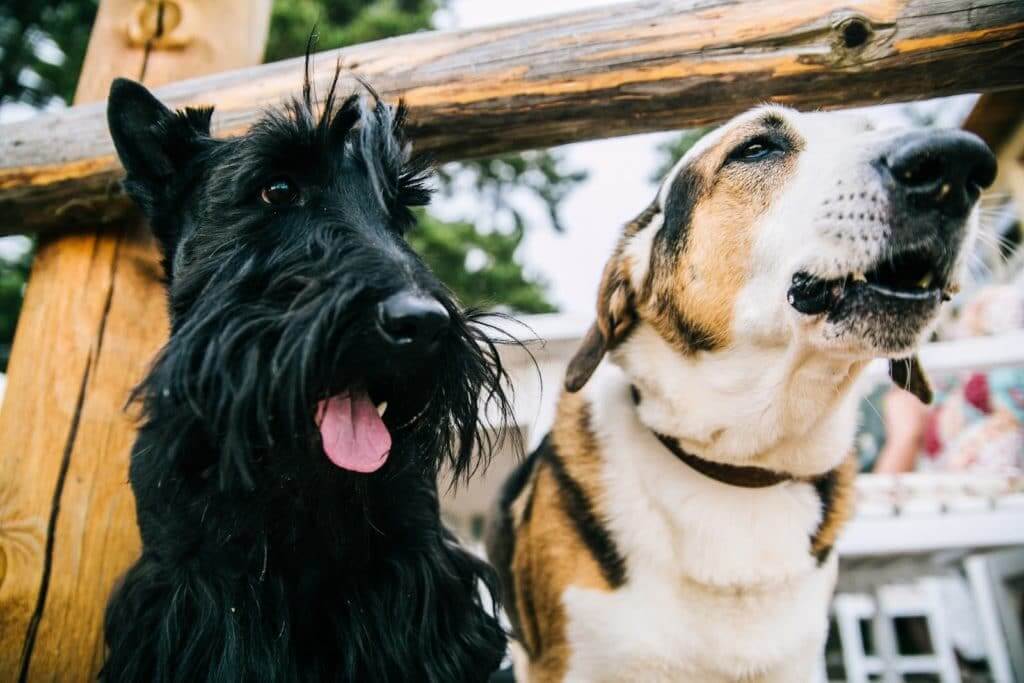
How to Introduce Dogs: Canine Greeting Protocol
It's safe to say that at some point, your dog is going to meet another dog. Whether that dog is a puppy you're bringing home as a new family member or a stranger's furry friend at the dog park, you want introductions to go smoothly.
Introducing dogs doesn't have to be complicated, but it should be done carefully. That way, there's minimal risk of tension between the dogs, territorial behavior, or worst of all, fighting or injury. Then, your dog and the new dog can get used to each other in a safe environment and go about their business as usual.
Find a Neutral Territory
The first step is to find a neutral territory for the two dogs to meet. This means avoiding spaces a dog has claimed as its home, like a house or favorite bathroom area. It's best to instead find an outdoor space, like a public park or a neighbor's backyard.
If you can't use an outdoor space, a garage or large shed could work. As long as it is a comfortable space that neither dog considers its own, you'll be able to avoid any territorial behavior.
Remove Potential Triggers
Put away anything that the dogs could fight over — toys, bones, food, treats, etc. — so there aren't potential triggers for scuffles or other bad behavior.
Try to pick an area without tight spots, like a narrow staircase or a cramped corridor, so that the two dogs don’t get crammed together and become anxious or aggressive with one another.
Do a final check for any harmful objects or substances, like sharp tools, cleaning supplies, or toxic plant life. Make sure there aren't hard edges or corners that dogs could run into if they get excited.
Finally, take steps to ensure that other pets in the home, like the family cat, can’t gain access to this neutral zone. You don’t want Whiskers to interrupt your dogs’ first meeting and throw a wrench in the works.
How to Introduce Dogs: The First Meeting

Now that you've prepared for your current dog to meet the new dog, it's time for the big moment. How do you help the dogs get along and meet each other in a safe, controlled way?
Take It Slow
Rule number one when having two dogs meet is to take it slow. Tossing two dogs together in your backyard or living room and hoping for the best is not a good idea, and it could result in very negative outcomes. The two dogs may never get along fully, or they could attack each other. Let the dogs see each other from a far distance, and then guide them toward each other slowly. Do not let the dogs run up to each other. First impressions are very important.
Use Leashes
Keep both dogs on their leashes during the initial introduction. While you're holding your dog's leash, have someone else — a family member, the new dog's foster parent, etc. — hold the other dog's leash. Don't try to hold both dogs' leashes at the same time, because you won't have the control you need. Keeping both dogs leashed during the first meeting gives each dog a sense that they can’t do whatever they'd like. It also allows you to guide your dog's movements and pull them away if necessary.
Watch the Body Language
The two dogs will sniff each other at first to assess the other pup. Paying attention to the way the dogs interact after that initial greeting can clue you in to how the relationship is starting off. Signs of a positive first meeting include:
- Relaxed body language
- Relaxed facial expressions
- Fast tail wagging
- Upright tails
- Play bows (a position with the front end down and hind end up, a sign that the dog wants to play)
Signs that the dogs' first interaction isn't going well may include:
- One dog’s head turning away from the other dog
- Tense bodies, postures, or teeth bared
- Tails held low or in between the legs
- Hairs standing up along a dog's neck or back
- Growling or barking
If the dogs aren't getting along well at first, separate the dogs and try again later. A poor first meeting doesn't mean that two dogs will never get along. It just might take a little more time.
In-House Introduction
If the introduction went well in a neutral territory, you're ready for the dogs to move indoors. It's best to take the resident dog out for a walk while the new dog explores the home, as this lets the new dog get used to his or her surroundings without intruding on the other dog's territory.
Meeting on the Street
Of course, you won't be able to prepare for every dog meeting. There are plenty of occasions when you'll meet another dog but didn't plan on it — on a walk, a visit to the pet store, or a trip to the vet's office, for instance. First, always ask the other dog parent if it's okay for your dog to greet theirs. Once it's approved by all parties, allow the dogs to sniff each other in greeting, but keep a careful eye on them, and maintain a strong grip on your dog's leash to hold them back if necessary. If either dog gets overly excited, starts growling or barking, or begins baring their teeth, thank the other dog parent and move on.
Dog Relationships Moving Forward
If you're introducing a new dog to your home and you already have a canine companion, you'll want to maintain healthy, respectful interactions between the two dogs. Give each dog their own separate spaces for sleeping and eating. Make sure that each dog has their own bed and food bowl.
When you leave the home, it's always best to keep the two dogs in their own crates or in separate rooms until you're back. This eliminates the chance of any fighting or injury when you're not around, and it gives each dog much needed time alone to regroup and relax. Dogs who spend too much time together can become overstimulated, possibly leading to fighting or other bad behaviors.
Forge New Dog Friendships
Remember: It may take some time before two dogs warm up to each other. Be patient, and don’t expect the two dogs to become best friends right away. It may take weeks, or even months in some cases, for a pair of dogs to become completely comfortable with one another.
If you're unsure what your dog's behavior means when they're meeting another dog, or if you just can't seem to get your two dogs to like each other, it might be time to enlist the help of a dog trainer. A professional can work on each dog's social skills and help the pair get acclimated to one another safely. Then, the dogs can start to become lifelong canine friends.




























